One of the most influential automobiles ever made, the Model T enabled affordable motorized transportation to get into the hands of U.S. consumers. And they did it nearly 15 million times between 1908 and 1927. Sometimes referred to as a “Tin Lizzie” or “Jitney”, the Model T came in a variety of body styles and types, including this 1924 2-seat “roadster” (or in Ford’s vernacular, a Runabout). This looks to be a nice survivor that may need little to get it running again. Located in Encinitas, California, this “Leaping Lena” is available here on eBay where the bidding has just started at $7,500.
Ford was able to build these cars in large quantities due to their mastering of parts fabrication, which included assembly line production as opposed to handcrafting each car. The Model T is considered successful not just because of its build numbers, but because it signified innovation for the rising Middle Class in the U.S. It quickly became a strong symbol in the growing age of modernization which was the early 20th Century. Its sales volume over a near 20-year period places the Model T 8th on the Top 10 list of all-time most sold cars of all time (in the company of icons like the VW Beetle).
The Roadster or Runabout was one of the biggest sellers in the Model T lineup at nearly 15% of total production through the years. In 1924 alone, they built 293,000 of them, of which 260,000 had starters (there were non-starter models as well). As the seller says this Model T has a newer push button electric starter, perhaps it was one of the 33,500 units in ’24 built as a non-starter model.
We’re told this car is original and complete and was running great until parked a few years ago. It has been garage-kept all these years, thus allowing it to look so good for being 97 years old. The seller surmises that a new 6-volt battery and some tinkering with the fuel supply and flow is all that’s needed to get it purring (or shaking) again. Apparently, these things were prone to leaking, so the motor has a newer set of gaskets that stopped that.
The body is in great shape as is the black paint, your only color choice back then. It’s dirty from sitting a while, yet that just seems to add more charm to the old gal. It has some of the skinniest tires I’ve ever seen on a car, not much wider than bicycle tires. I didn’t realize until I saw these photos that the cars had wooden rather than metal floorboards. The trunk space of the Roundabout is just big enough to carry the requisite toolbox and a 12-pack! But don’t plan on getting to the store quickly, as the 177 cubic inch inline-4 only produced 20 horsepower.
The laws of supply and demand will always apply to cars like this. In Good condition, Hagerty pegs one of these Fords in Good condition to be worth $7,000 and maybe $20,000 in top-notch shape. So, owning one of these running relics is going to be less expensive than a ‘60s muscle car, as long as you nail down your sources for parts to keep Lizzie going!
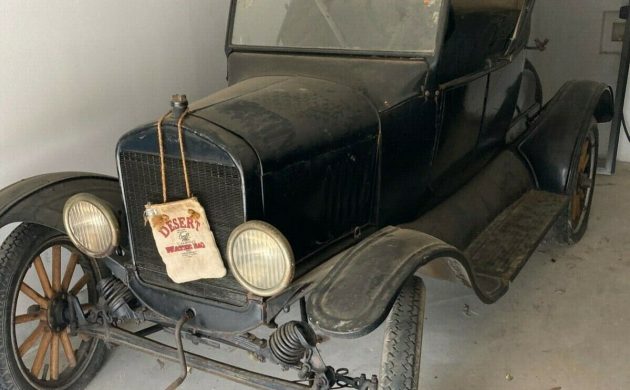
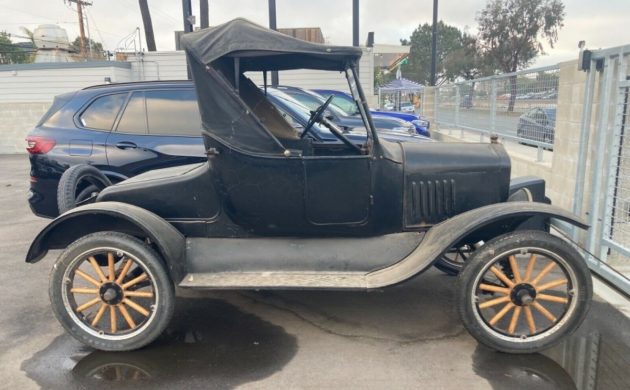
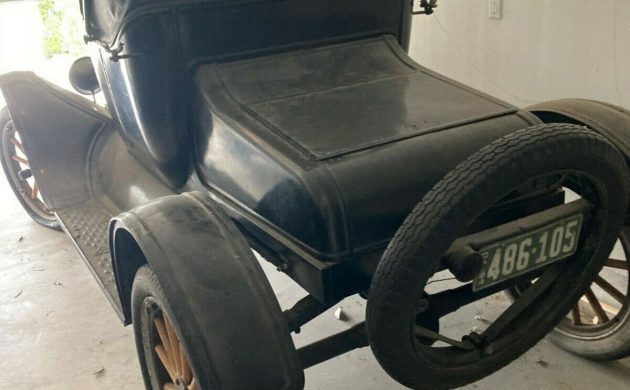

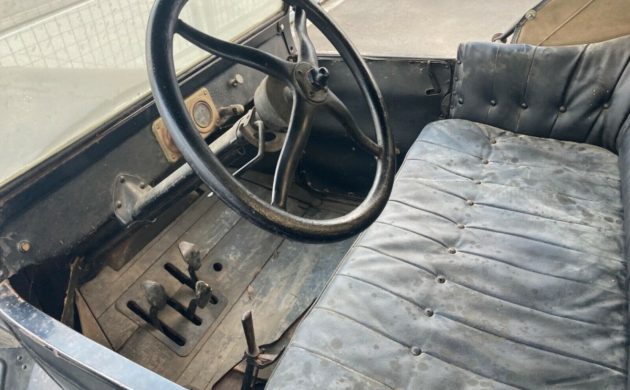
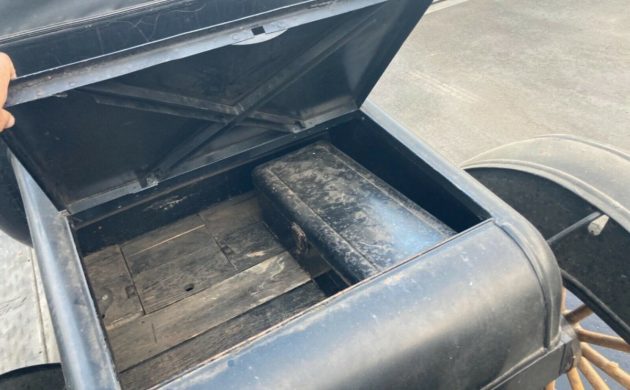


I would love to tool around in this, even back and forth to my night job(4 miles on a B road) and yes that’s why they are still called FLOOR-BOARDS. same as running boards, they started out organic too. I believe that the Model T assembly line re-used the engine crates as the floorboards.
I remember our history teacher in high school telling us how Ford would spec how his suppliers should pack the parts…In crates of a certain size, using packing of a certain type, etc.
Once the parts were unpacked, the wood from the crates was used in the cars, and the packing stuffed the seats, and so on. I think even the screws used to screw the crates together were re-used. It was recycling and re-purposing in the early automotive industry, though I’m sure Henry’s motivation was economic, not altruistic. Either way it’s impressive innovation..
The tires were narrow and the T had a high stance because many people still drove horse pulled buggies back then Many roads were severely rutted and the T was built to cope with the mud and the ruts.
One of the few things ever made that started at the bottom and then went down from there.I compared one of these to a model 490 Chevrolet from 1919 and the Chevy had brakes that worked on the wheels,a three speed transmission,a water pump and an oil pump.By comparison the Ford was right up there with the stone axe.
Hey Bob- did you get into a bunch of sour grapes? Kinda hard to justify throwing stones at a 97 year old survivor. A friend of mine just sold a ‘17 T Touring that was all original, down to the paint and upholstery.
In regards to the Chevy 3 speed – Henry cleverly came up with a semi-automatic. Many people, including my Grandfather, had trouble mastering a clutch and gear changes. Say what you will-Ts we’re amazingly durable.
It actually was John and Horace Dodge that came up with that transmission along the rest of it.
Hey, so it leaks and shakes — If any of us are lucky to reach 97 years old we’ll likely be shaking and leaking too !
My dad drove my grandfather on his daily rural mail route in a model T. Grandpa was a horseman; never could learn to drive a car. The model T could take abuse that no other car could tolerate. They tried a 1917 Baby Grand Chevrolet for a few months before the chassis broke in half. That was one of the ways the T survived those mud-rut roads of the day. They would bent and flex where others simply broke.
They made America Great…
Absolutely correct on the transmission! While seeing three pedals seems to scare some folks, operating them made driving the T easiest method to learn until the fully automatic tranny came into being.
That is kind of a mean thing to say, but also kind’a true.
Impressive to say the least. It even appears to have an original leather seat.
Top speed: 30 M.P.H.
Well, whaadya expect from a phlathead engine, sound barrier perfomance ???
At my age, I’m cool just to be going forward. And, that’s a phact Jack!
SOLD for $9,000.
the model T didn’t have any middle cross members so you could drive diagonally across a plowed field and the frame would bend and flex. The bad part without a fuel pump was the lower gas tank and if you didn’t have a lot of gas in the tank you could turn around and “back” up the hills so the fuel was higher up. That s why they put the fuel tank behind the dash on the model A’s.
I had a 1919 one ton truck with a two-speed rear end that helped some.